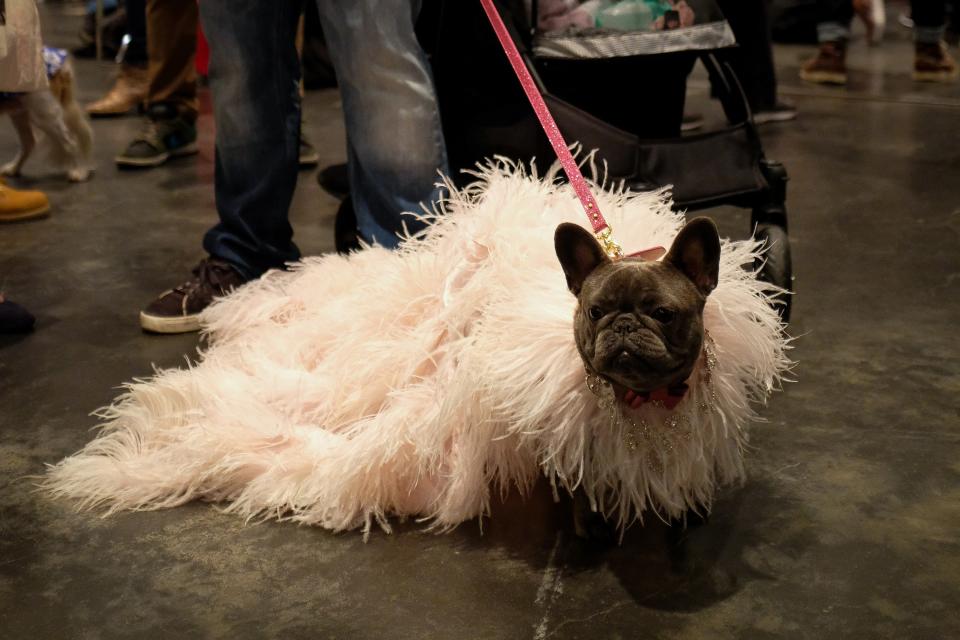It’s Hard Out There for a Pet Influencer
It’s Hard Out There for a Pet Influencer
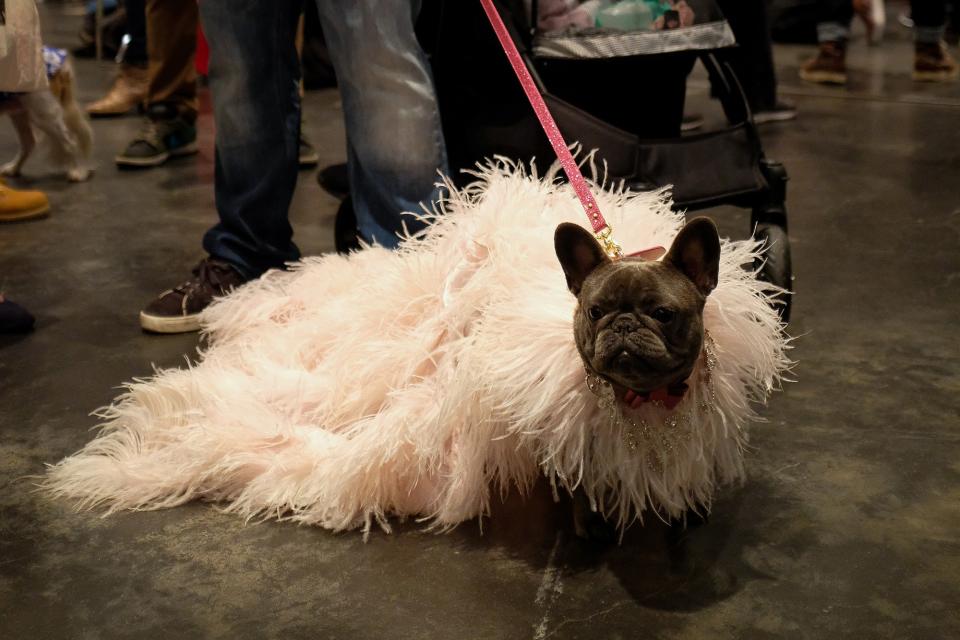
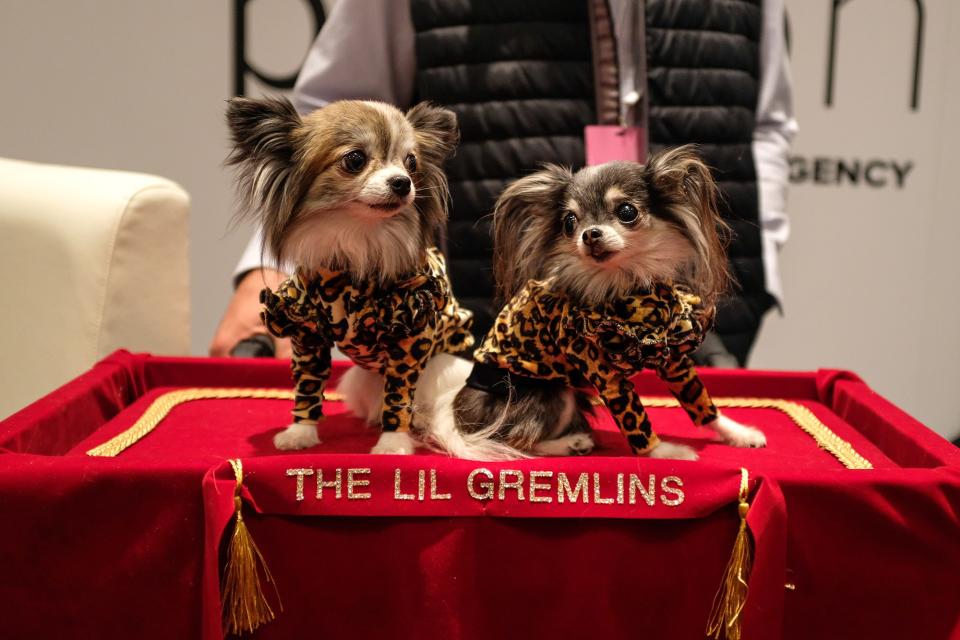
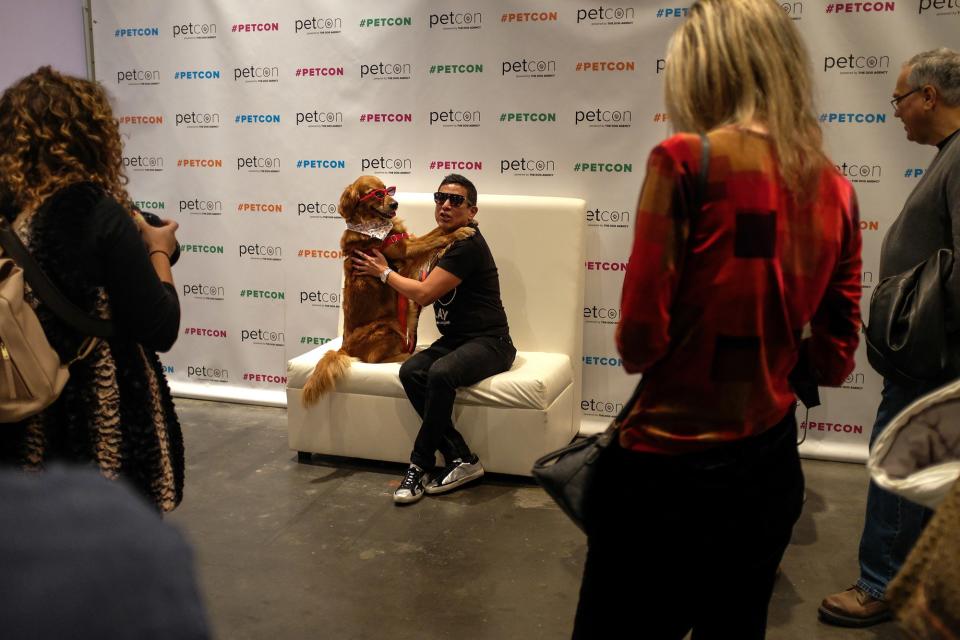
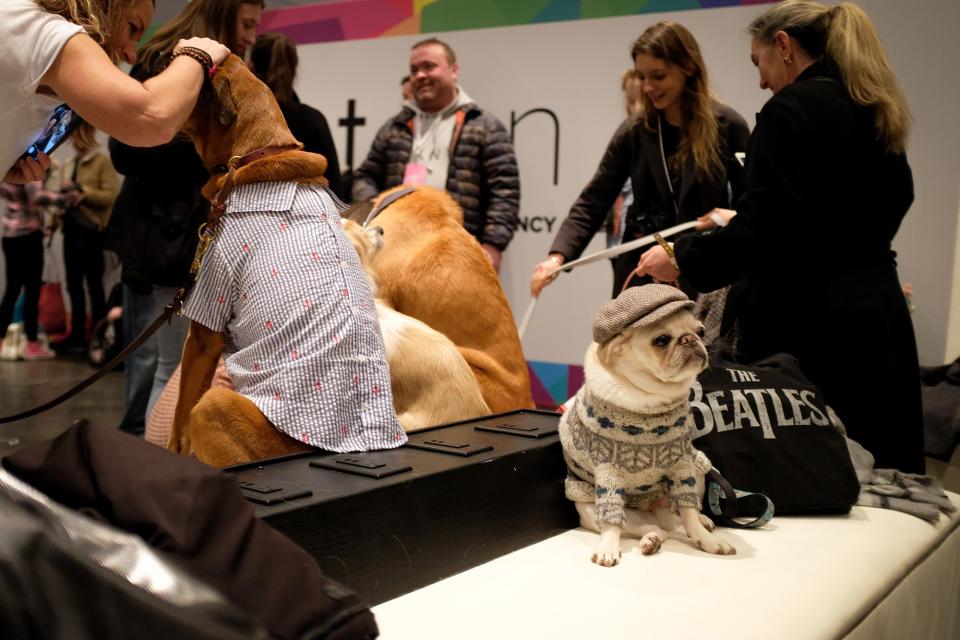
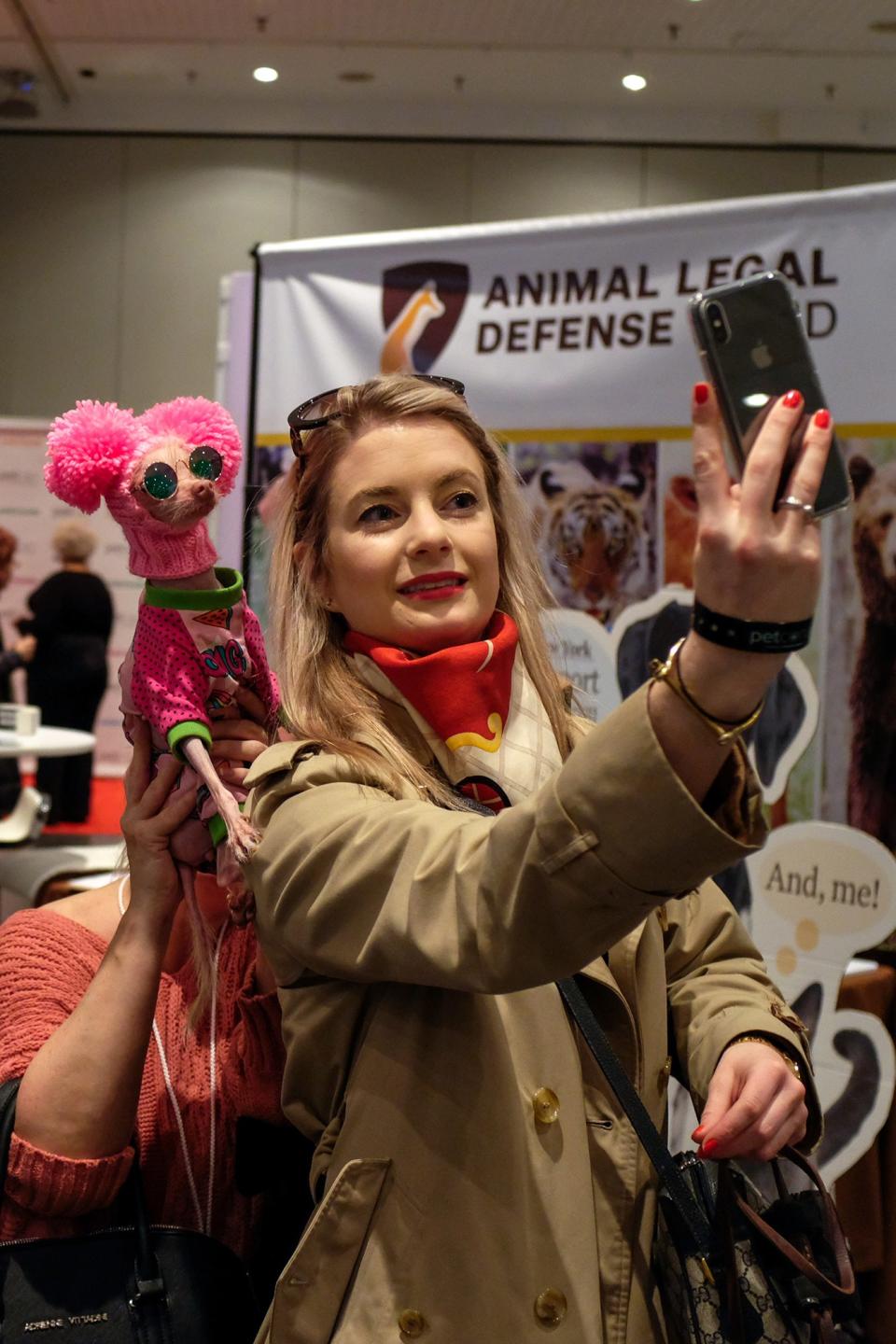
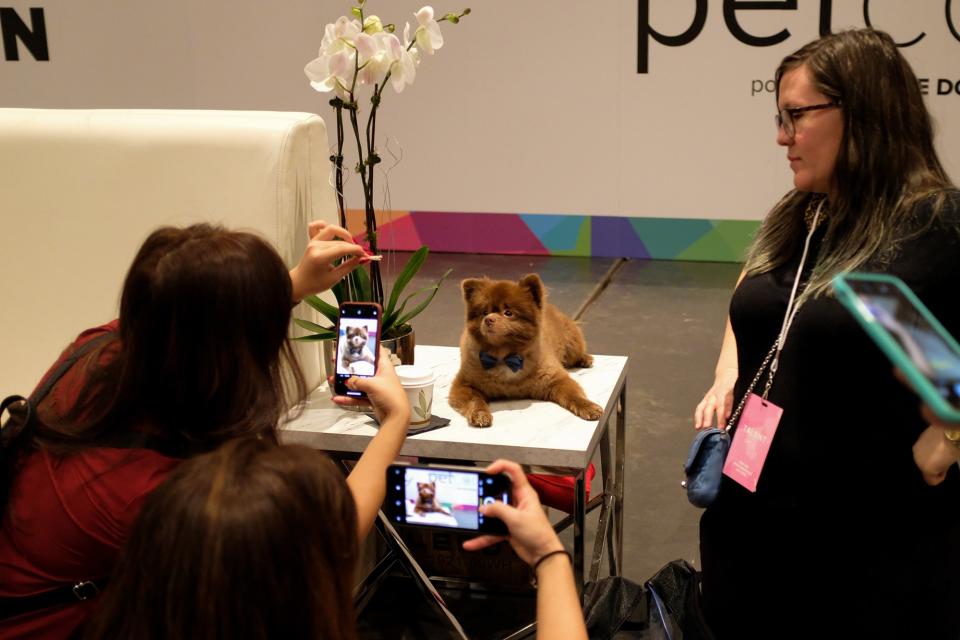

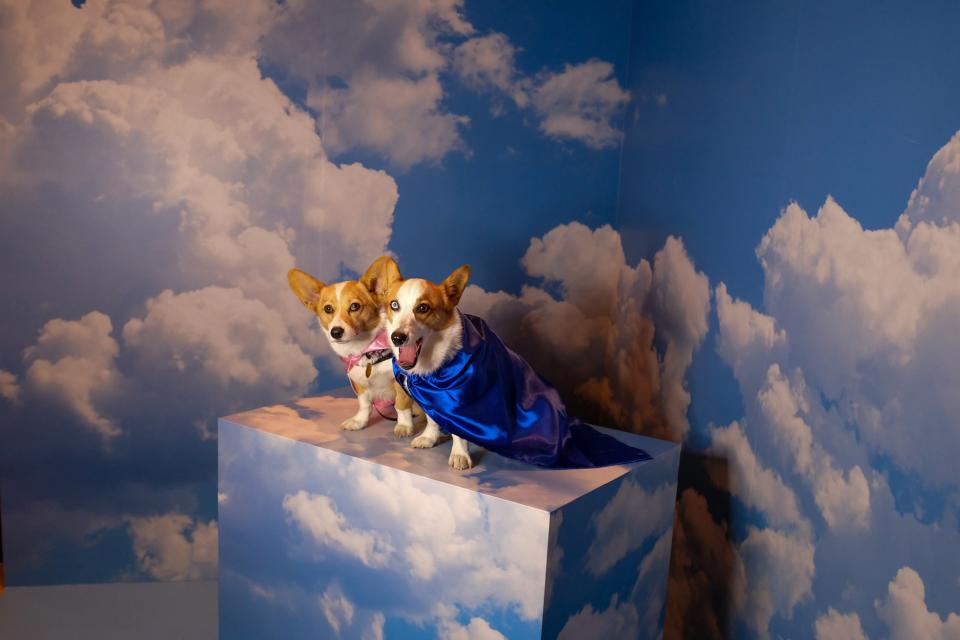
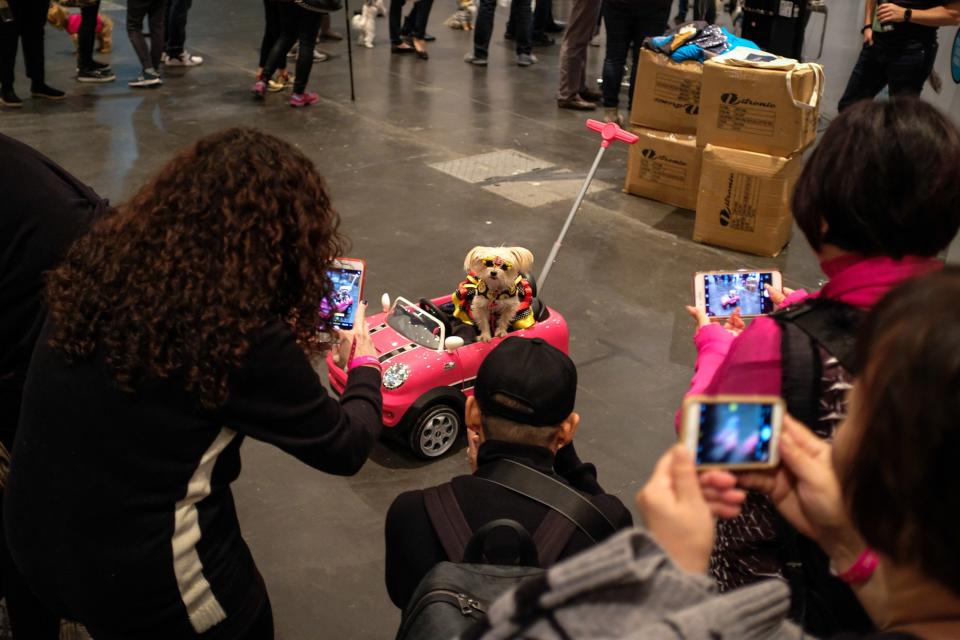
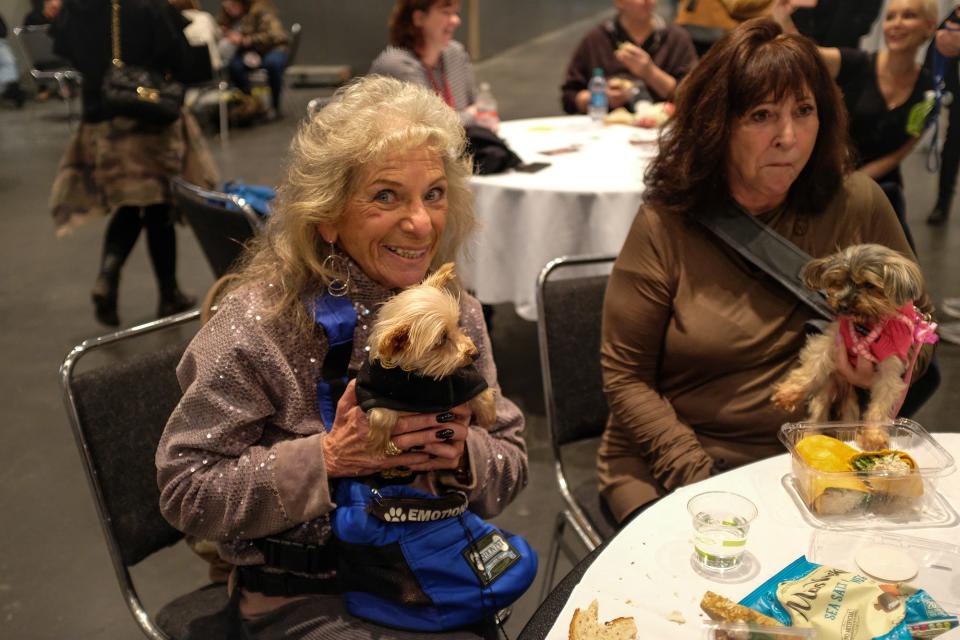


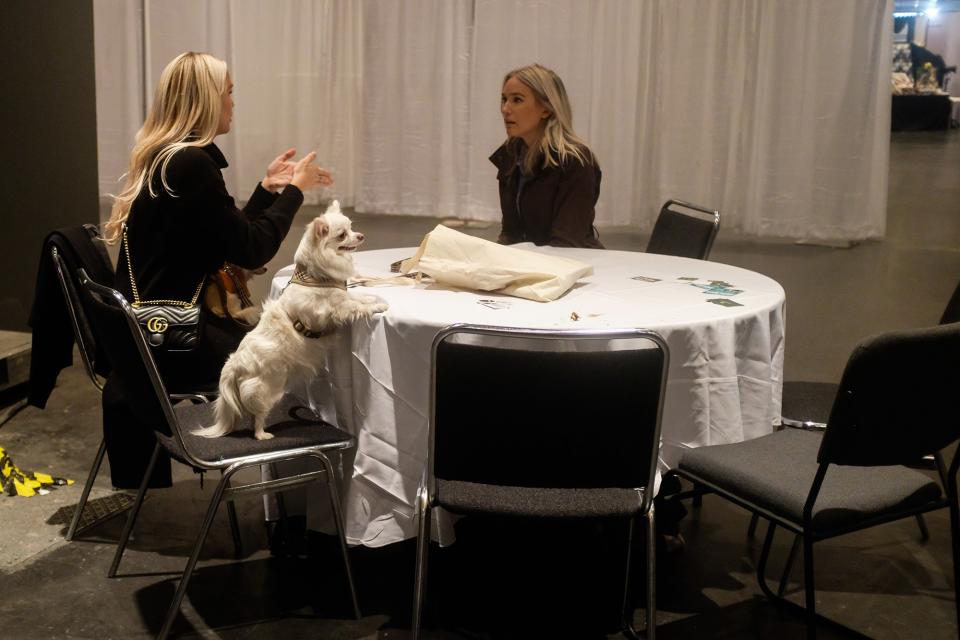
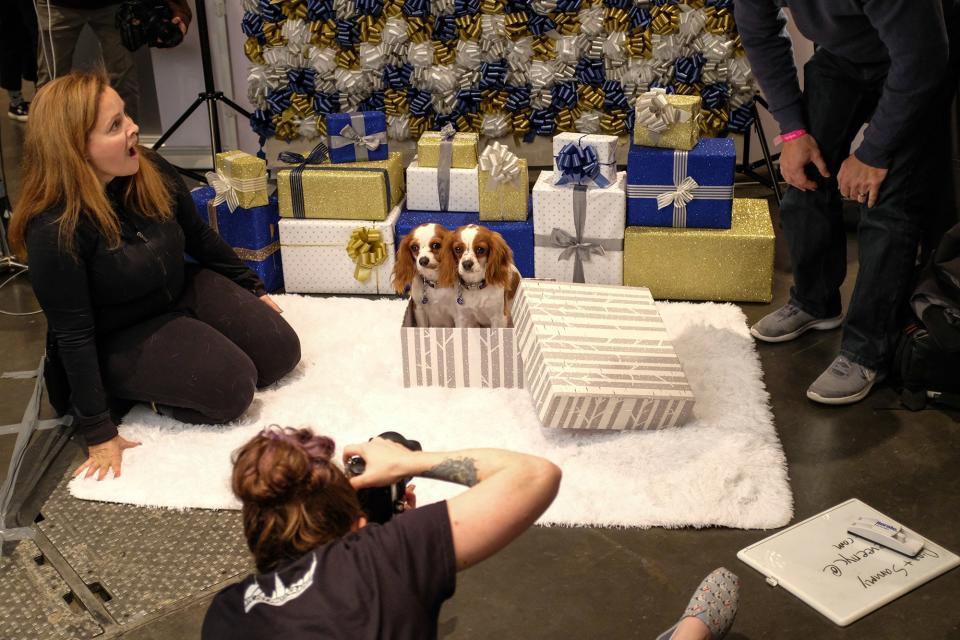
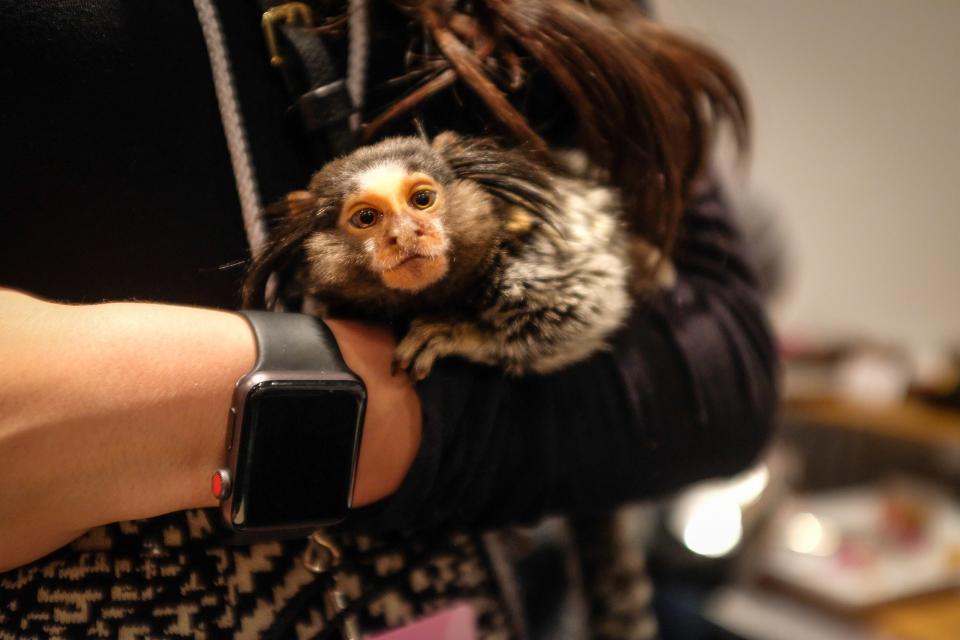
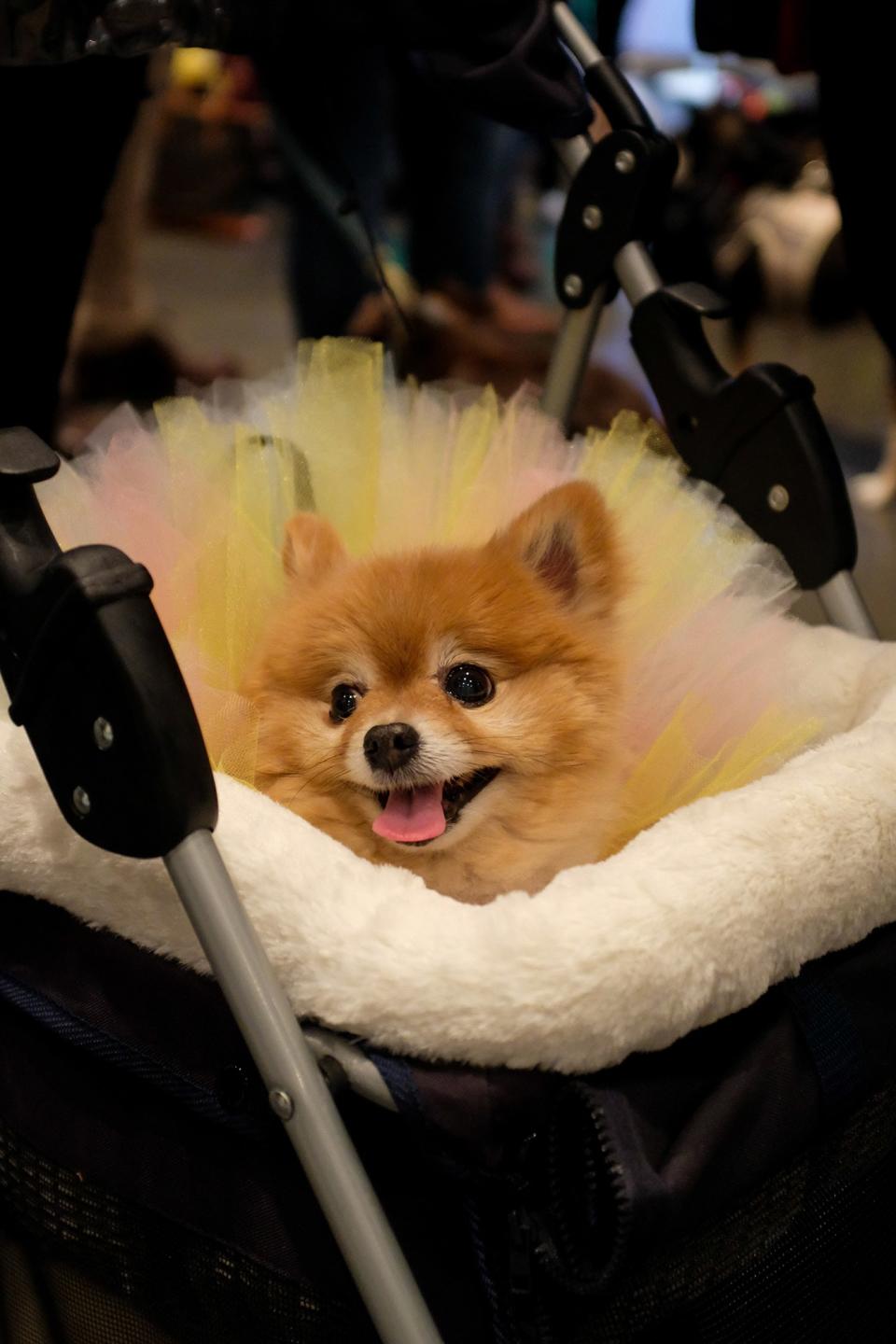
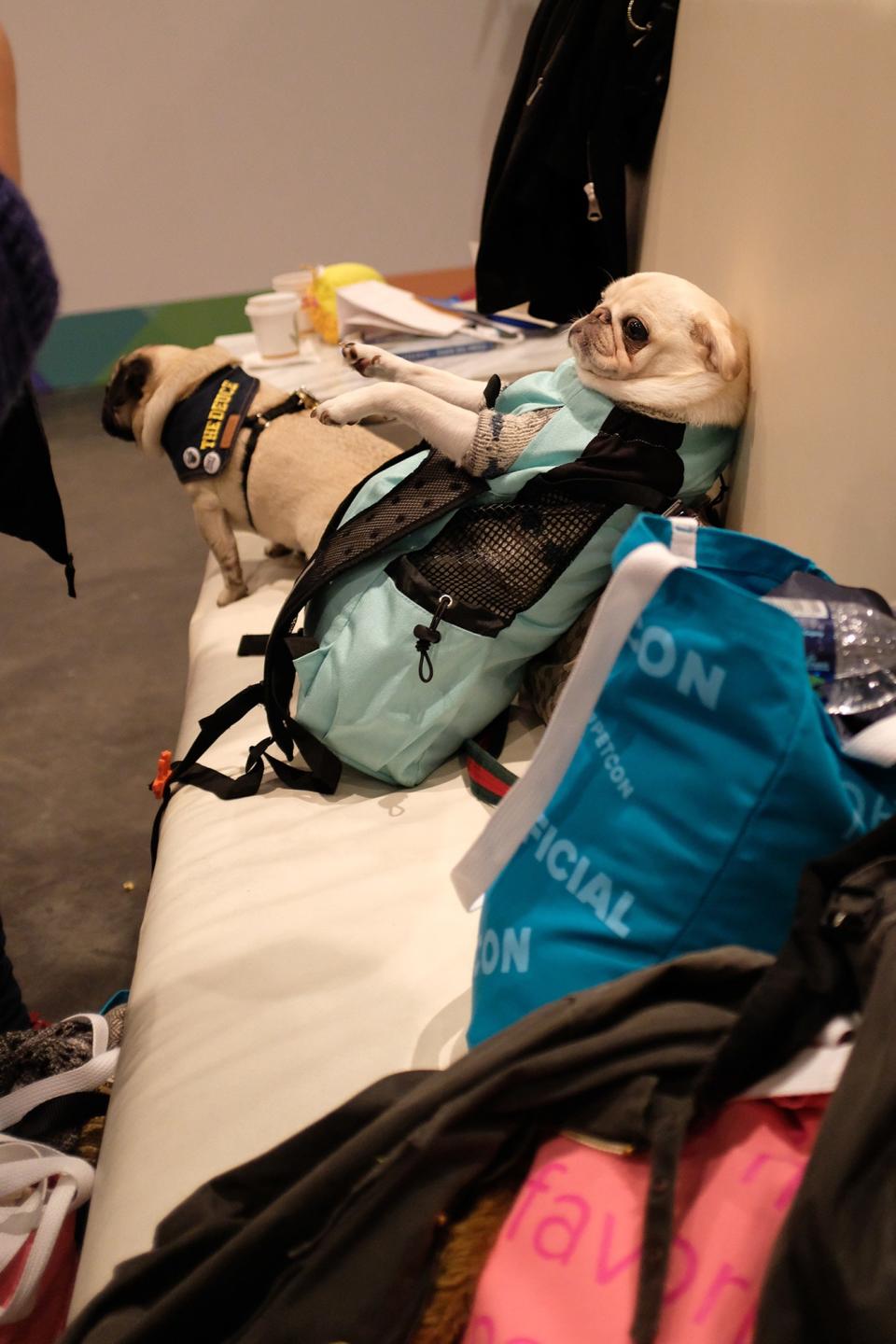
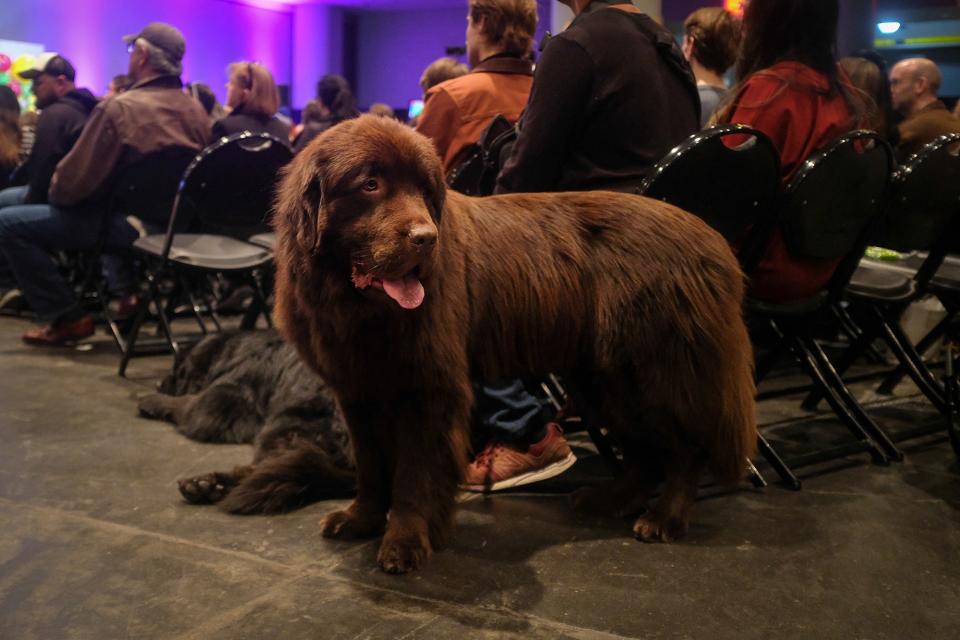
When I meet Izzy for the first time, she’s wearing a custom version of Lady Gaga’s pink feathered Valentino dress, created by her personal designer who used to work at Dior. I’m wearing jeans, coming from my cramped Yorkville apartment. She’s coming from the Plaza (she’s an ambassador) by way of the Hamptons, where she lives with her two dads, Rick Hendrix and Shane Jordan. One of my recent Instagrams got 224 likes; that’s good for me. One of Izzy’s recent Instagrams got 5,226. That’s good, especially when it’s a paid Dyson vacuum ad.
So, yes, Izzy is more fabulous than me. Which stings a little, because Izzy is a French bulldog.
Better known by her Instagram handle, @Izzythe.Frenchie, she’s one of more than 70 pet “influencers” appearing at New York City’s PetCon, the annual convention of Insta-famous pets. There’s @TunaMeltsMyHeart, a chihuahua-dachshund mix with an overbite and 2 million followers; @BertiebertthePom, a photogenic Pomeranian with fur that seems heaven sent; and @Crusoe_Dachshund, who stars in his own original short films.
Over the next two days, thousands of people will visit PetCon at the Javits Center, some to see the influencers like Tuna, Bertie, and Crusoe, the pets they like and follow from afar. But many don’t just want to see the stars. They want to be the stars.
PetCon is aware of these two audiences, and it carefully caters to those aspiring pet owners who will make the industry bigger. Behind it all is the Dog Agency, the first—and really, only major—management company for social media celebrity animal clients. Want to spon-con your sheepadoodle? Make your vizsla go viral? Turn to the Dog Agency. At the back of the room at PetCon—past the photo booths, the agility course, the step and repeats—there’s a partitioned off section for panels. Panels like “Grow Your ’Gram: Content Creation and Community Building” and “Pet Money, Big Money: The Pet Industry Boom.” They’re packed with people armed with pens, pads of paper, and . . . pets.
Then there’s what I call the Roaming Rovers, the owner-animal pairs who, not affiliated with any official programming, aimlessly wander the fair handing out business cards to anyone who shows the slightest interest in interaction. “Follow us!” they say, an intense longing lingering in the air.
It’s easy to mock their mission, to dismiss their drive. But to do so is to ignore the influencer movement as a whole. Influencer marketing grew 198 percent in 2017, according to social media analytics company Klear, and is expected to reach $10 billion by 2020. There’s money to be had in the pet sector: “On average, someone with 100,000 [followers] is getting around $1,000 to $2,000 per post; someone with 500,000 is around $5,000-plus; and someone with more than 1 million is in the $10,000-plus range,” Loni Edwards, CEO of the Dog Agency, tells Vogue.
“I am an interior designer by trade. I never thought I would quit doing that or leave my job,” says Courtney Dasher, the human behind Tuna Melts My Heart. But after her account started gaining traction, she left her firm to run her dog’s account. At first, “it was a total leap of faith,” she says. “But then I got a book deal a couple months later.” She and her husband now both work full-time on the account.
Ryan Beauchesne, who runs the Crusoe the Celebrity Dachshund account, launched seven years ago and now has more than 1 million followers across all social media platforms and more than 1 billion video views. Three years ago, he went full-time. Like a traditional pet influencer, Crusoe has partnerships. But Beauchesne also parlayed his social media fame into another business opportunity, launching a line called DoggoRamps, meant for small dogs who need help climbing onto beds or other furniture. He says the company has already raised more than half a million dollars in funding.
But in order to make that kind of money, you have to become an “influencer” in the first place, which isn’t as easy as snapping a cute picture here and there. Most managers of successful accounts put in full working days between answering emails, responding to fans, and creating consistent content for their platforms of choice. “Our content is a pretty extensive production. We are doing big video productions with voice-overs. There’s writing the scripts, props, a set, costumes,” Beauchesne says. One recent example? A Prison Break–themed video for which Beauchesne and his team built a jail cell complete with real dirt under the floor so Crusoe could tunnel out. “It’s a whole week to make one, three-minute video,” he says.
But even posting a photo a day isn’t going to get you from 200 followers to 200,000. Most pet influencers admit that they stumbled into popularity—they started posting pictures of their pets, people liked them, and then it just snowballed.
Talking to several influencers, however, common threads emerge. In a 2011 TED Talk, Kevin Allocca, YouTube’s head of culture and trends, broke down the three reasons things go viral. One is participation—it needs to resonate with people, and make them want to comment and share. This is an easy one for pet influencers: People love animals, particularly in contrast to the content that has filled the Internet of late. “The Internet is such a dark place. I think people are desperate for humor and positivity,” Kathy Grayson, who runs @BertiebertthePom, says of her success. The Dog Agency’s Edwards agrees: Her most successful clients have “great content—content that makes you want to share it, tag a friend.”
The second factor is unexpectedness. Many influencers dress their pets up in fantastical, stand-out costumes like Izzy, or create fantastical stories, as with Crusoe. All of them have distinct voices beyond the typical animal baby voice. Tuna’s attitude is “old grandpa,” Bert “has elaborate conversations with people,” Izzy the Frenchie is a sassy fashion lover (complete with a Joan Rivers–style fashion blog called Pawshion Police). Edwards confirms that a successful pet Instagram account will have “a strong brand identity, so people know what they’re getting when they come to the page, whether it be a fashion focus, travel focus, rescue focus, et cetera.”
The appeal of the unexpected may also explain why America’s most popular dog influencers do not correspond with the most popular dog breeds, a phenomenon noted in The New York Times. Logic would have it that Labrador retrievers would make up the greatest percentage of pet influencers, but people are more drawn to, well, frankly, the funny-looking ones: dogs with missing legs or tongues that stick out, with erratic hair or misshapen silhouettes. The underdogs, like Mervin, an 11-year-old Chihuahua with more than 125,000 Instagram followers. “He is a very tough little guy. He had to have his teeth removed, his back legs repaired. His bladder ruptured, and he had to have surgery. Then he had cancer,” says his owner, Joey Teixeira. “So people really rallied behind him, because he is so tiny but still so strong.”
The third reason something or someone goes viral is due to support from a tastemaker—basically, someone famous needs to share it. Take Tuna: After he was featured in the @Instagram series #WeeklyFluff, his follower count grew from 8,500 to 32,000 in 12 hours—and that was in 2011. By 2017, virality had become a whole different ball game. Izzy the Frenchie became famous after 9Gag, a Hong Kong–based site, featured a video of her taking a bath. Nearly overnight, the video got 12 million views and 250,000 comments and was picked up by Today, People, and RightThisMinute.
But even for those who make it, pet fame has its perils. Many can’t take their dogs out for a walk without being bombarded by strangers. Grayson, who owns The Hole gallery in New York City, sometimes has to hide Bert from swarming crowds at art fairs. "I’m starting to build a wall to hide him behind. I have to sell 200k worth of paintings or bust, and everyone wants to buy a Pomeranian," she says. Tuna has become so recognizable, says Dasher, he needs the doggie version of a tinted-window SUV: a black airplane bag with wheels. Dasher also capped his meet-and-greet time at two hours, although she tries to stick to an hour and a half. “I mean, he’s a dog.”
And then there’s the sad fact that pets don’t live forever—so, neither will this revenue stream (which is why it’s a good business move to launch an account with multiple animals of staggered ages or phase in a new, younger pet over time. Dark, but true). Plus, it can be isolating to be the manager-maestro for a creature that likely has no idea what is going on in an industry that’s just figuring itself out. “It is such a weird thing, honestly,” Grayson admits. “Whoever pretends this is normal is kidding themselves.”
